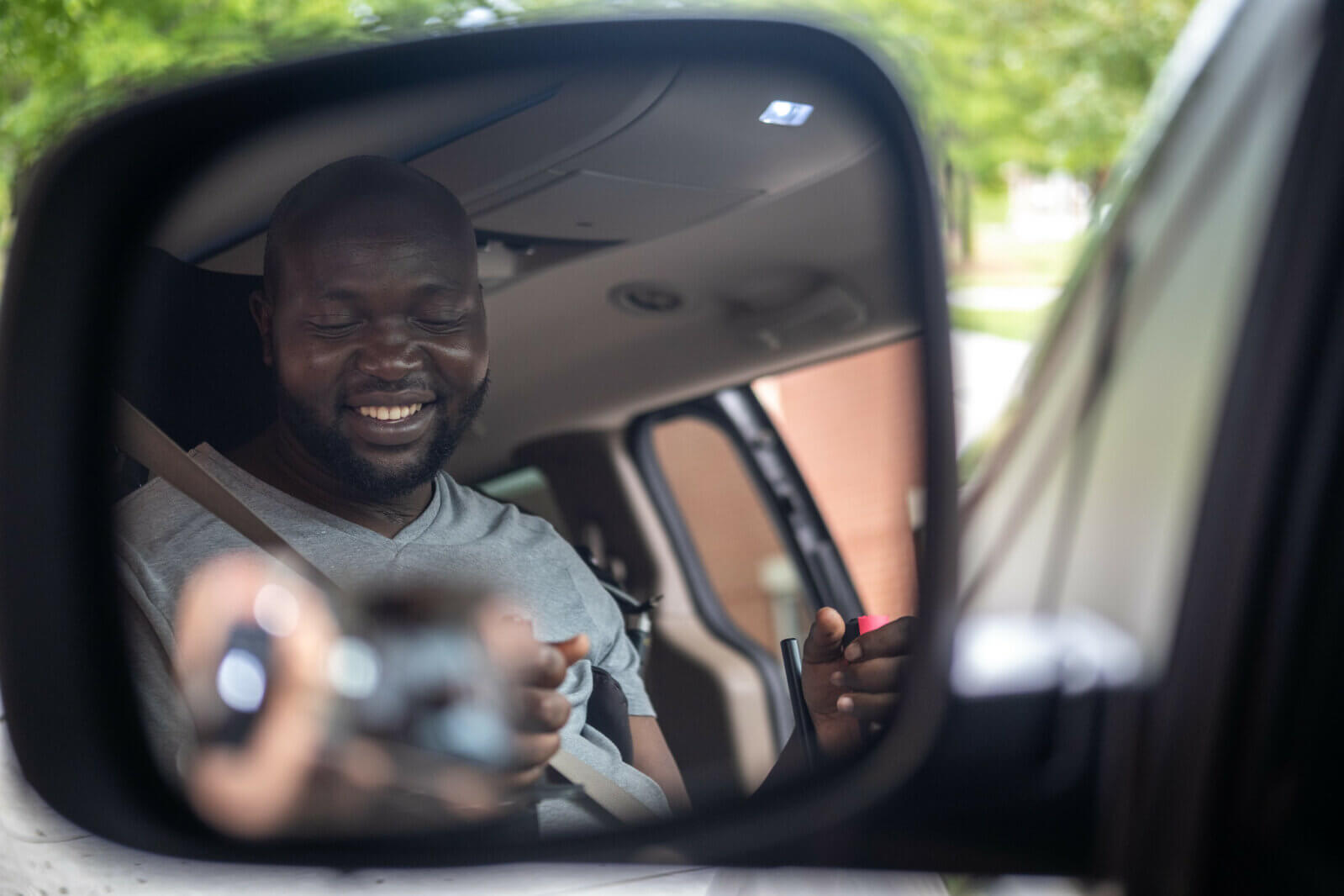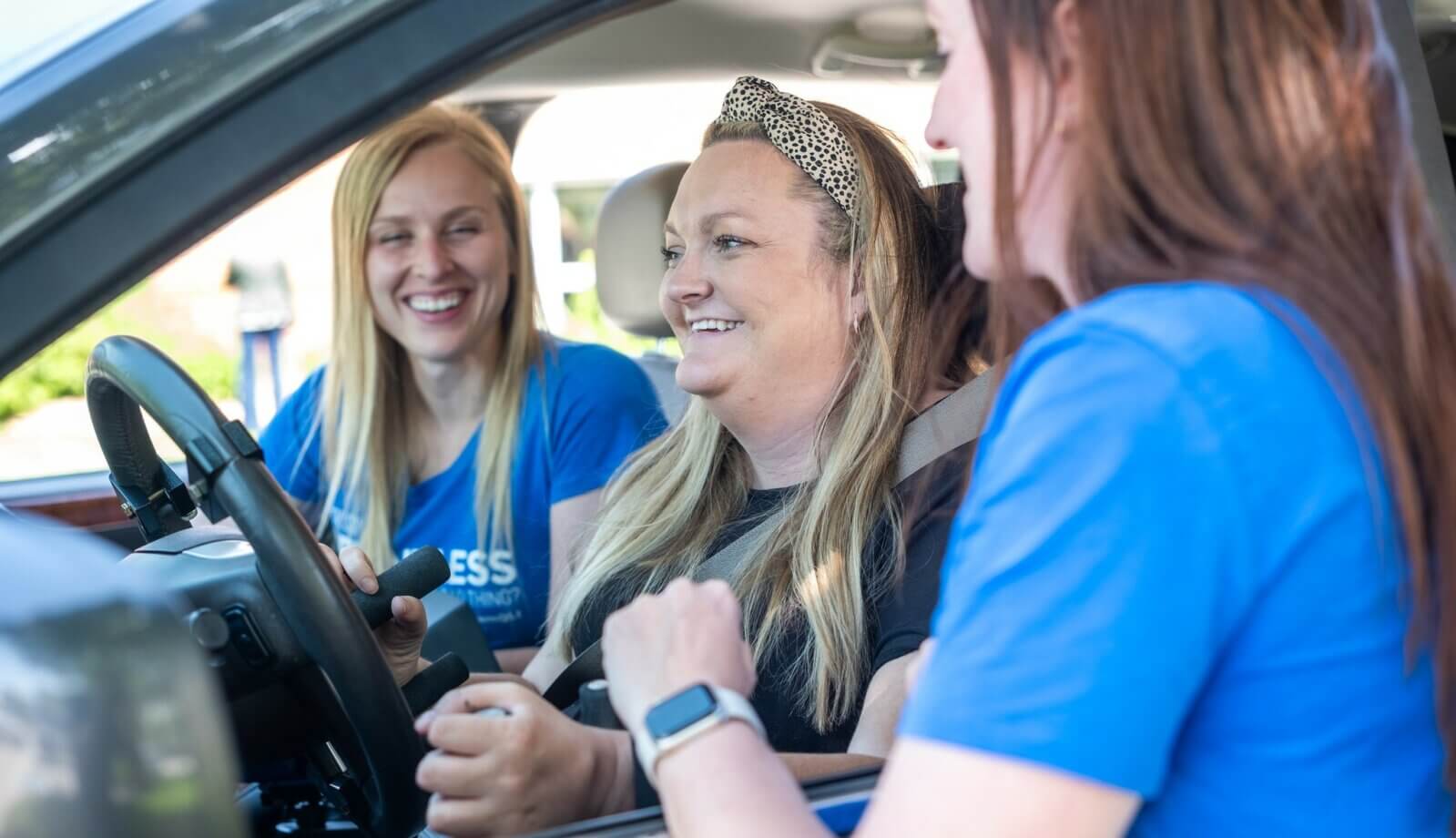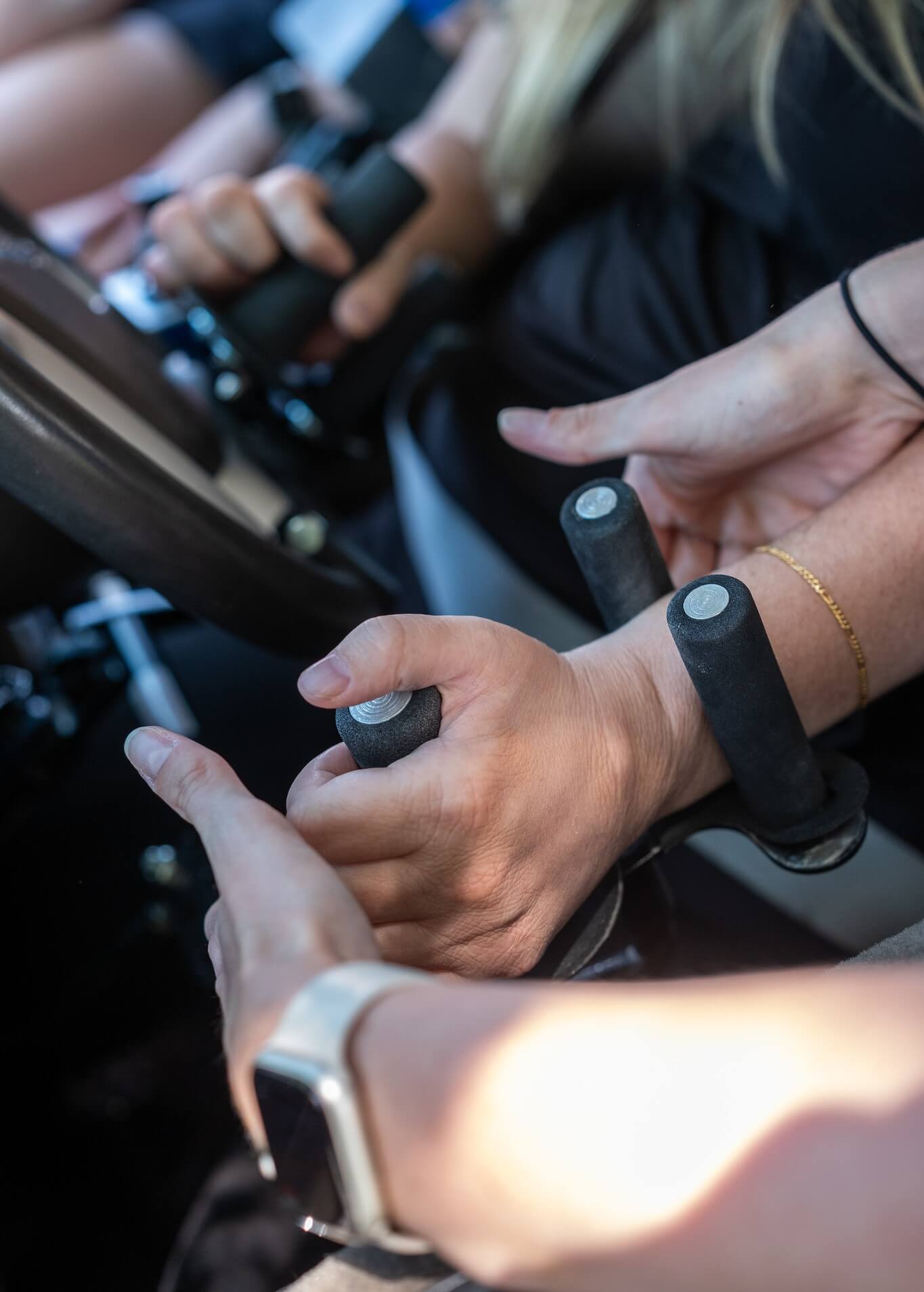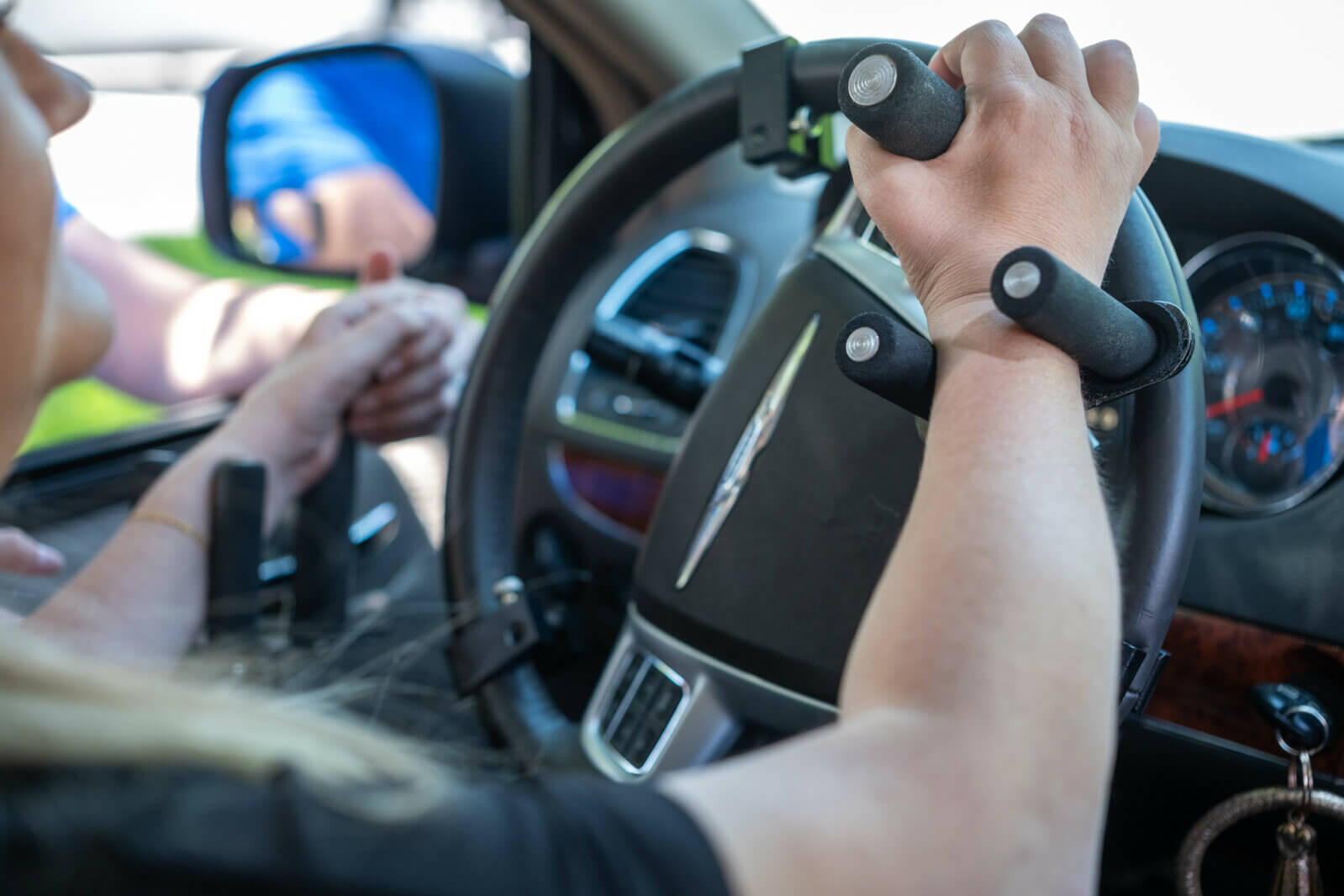Adaptive Driving Program
Find the Road Forward
Driving gives us independence and the freedom to access our world. After neurological injury, residual physical, cognitive, or visual deficits can make driving feel like an unattainable goal. But through adaptive equipment, assessment, and coaching, it is possible to regain the skills and confidence to meet the state-mandated requirements to be a safe and legal driver.

About the Program
QLI’s Adaptive Driving program offers three levels of assessment and accessibility: No-Tech, Low-Tech, and High-Tech programs.
No-Tech
No-tech driving involves the evaluation of an individual’s cognition or vision and recommendations to improve safety and independence while driving a vehicle without the use of additional equipment in the vehicle.
Low-Tech
Low-tech driving involves the use of adaptive equipment in the vehicle that alters primary or secondary controls, making driving accessible to those with compromised movement. These adaptations may include hand controls, steering devices, left foot accelerators, and adaptive seating options.
High-Tech
High-tech driving systems involve the alteration of the original equipment of the vehicle by a certified mobility equipment dealer. The high-tech equipment requires the least effort to operate by eliminating the need to move against gravity. The high-tech driving systems can be installed to operate the gas, brake, steering, and secondary controls of the vehicle.

Each program begins with a comprehensive evaluation including vision assessment, reaction time test, and evaluation of cognitive skills/level [OR potential cognitive deficits/barriers]. The results of this evaluation are used to build personalized training sessions focusing on specific areas of need. A variety of equipment options are considered and incorporated for individuals who require adaptation for vehicle operation. Finally, a series of on-road practice sessions help build skill and confidence. All stages are tailored to your needs and delivered by a qualified rehabilitation professional in a supportive and encouraging environment.
Assessment
The assessment phase is both formal and functional. Paper assessments help assess cognition, vision, and physical abilities. Behind-the-wheel assessments include both stationary and dynamic to determine appropriate and preferred adaptive equipment, based on the client’s needs.
Training
Formal training routes have been created to assess a variety of driving skills including various types of traffic, multi-lane roads, intersection negotiation, speed modulation, and lane positioning, among other.
Customization and Fitting
After assessment and training is complete, a preferred certified mobility equipment vendor will be determined to assist with the installation of adaptive equipment, if applicable. Your DRP and vendor will collaborate to ensure all needs are met.
Program Eligibility
- Must have a current and valid driver’s license or permit
- Not currently prescribed or taking any narcotic-level pain medication
- Meets the minimum visual requirements for your state. For Nebraska residents, please refer to this link to ensure you meet state requirements.
Program Requirements
Current and Valid Driver’s License
A current and valid license or permit for training purposes is required to participate in the behind-the-wheel evaluation and training on public roads. QLI does not evaluate and/or train previously unlicensed drivers. It is necessary to provide a copy of your license or permit prior to meeting with QLI’s driving program team.
Doctor’s Orders or Prescription
A referral order from your primary care physician stating that you are medically cleared for driving evaluation and any necessary training is required for this program.
Insurance and Financial Support
Payment for evaluation must be received prior to the time of evaluation and will not be submitted to insurance for reimbursement. We will estimate a range of hours for training following the initial evaluation.
Vehicle and Modification Costs
You will be responsible to source funding for the purchase of your personal vehicle and modifications as recommended by QLI’s Driving Rehabilitation Professionals. You must have the ability to obtain and maintain vehicle insurance coverage.
Medical Records
A representative from our program will reach out to request a current history & physical, current medication list, and information from vision specialist (if applicable) from your primary care provider.
Program Cost and Funding
Rates are available for all levels of evaluation as well as an hourly rate for driver training sessions.
QLI is able to accommodate a variety of funding sources. We work regularly with Vocational Rehabilitation Services, workers’ compensation insurance and private payment.
For more information on rates and funding options, contact us via the form below.



Testimonials
For More Information


Ali Conry
Adaptive Driving Program Coordinator
